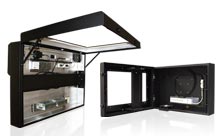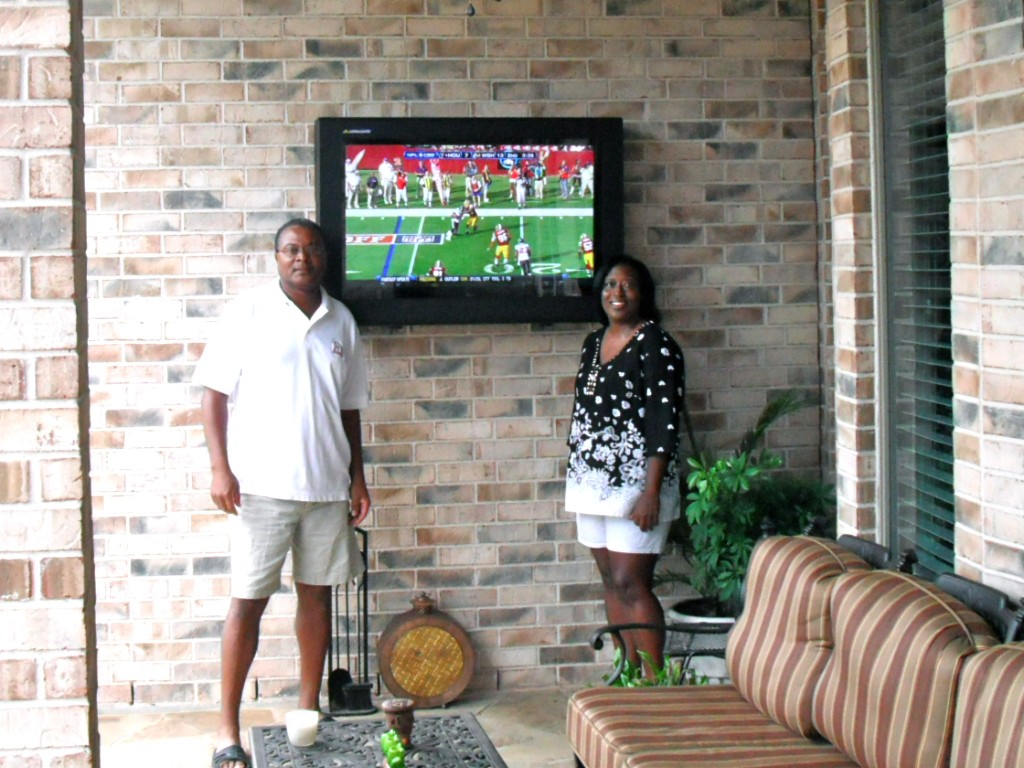News

LCD TV Protection – Indoor and Outdoor
Posted by: Richard Williams | Posted on: November 29th, 2010 | 0 Comments
There can’t more than a handful of people around who don’t watch or use a TV, and not just for entertainment, either. Modern TVs such as LCDs and plasmas are frequently used as computer monitors. Read More

Touch Screen – The Next Step for Outdoor Digital Signage
Posted by: Richard Williams | Posted on: November 26th, 2010 | 0 Comments
The digital signage market seems to be in constant flux. New developments, innovations and the reinvigoration of old ideas already exhausted in print media means there is always something happening in the world of Dooh (digital out of home). Read More

Consequences of Poor Outdoor Digital Signage Protection…Part One
Posted by: Richard Williams | Posted on: November 24th, 2010 | 0 Comments
The rise of digital out of home (Dooh) has been an expeditious one. From the first screens installed in shopping malls and transport hubs, to today, where the high streets are becoming filled with outdoor digital signage screens, kiosks and digital posters. Read More

Sunlight and Outdoor Digital Signage – Protection Issues
Posted by: Richard Williams | Posted on: November 22nd, 2010 | 0 Comments
While most screens placed outdoors, whether for outdoor digital signage, entertainment or to provide information, are protected from the elements, often in an outdoor LCD enclosure, many screens are still left vulnerable. Read More

LCD Enclosures – Applications and Uses
Posted by: Richard Williams | Posted on: November 19th, 2010 | 0 Comments
LCD enclosures are a quite a recent innovation. Developed after the arrival of modern flat screen TV panels such as Liquid Crystal Displays (LCD) and plasmas, they are designed to protect these standard TVs allowing them to be taken outdoors or into harsh locations, whilst still permitting the LCD to function normally.
LCD enclosures, therefore, have to be waterproof, able to withstand impacts, and have a wide operating temperature range.
The uses of these rugged and versatile protective LCD enclosures are varied, with new applications being implemented all the time, but here are the main uses of these flat panel protective housings:
Outdoor Digital Signage
One of the most common uses of LCD enclosures is to protect TV screens for use in advertising, branding and promotion. Outdoor digital signage is becoming increasingly common; there are high audience figures available for advertisers and promoters in outdoor locations.
LCD enclosures enable these outdoor promotional screens to function in any location providing a cost effective and versatile from of outdoor digital signage.
Outdoor TV
Also becoming increasingly common is the use of TV screens in outdoor locations. Pubs and bars find they increase revenue by providing outdoor entertainment, especially in consideration of the smoking bans, but increasingly, homeowners too are placing TVs in back yards and patios.
As LCD enclosures house standard TV systems, this too makes a cost effective alternative to outdoor waterproof TVs, which can be extremely expensive – especially for homeowners who may not justify the decision. With and LCD enclosure an old TV can be taken outdoors or a new budget system can be bought just for the back yard.
Information Screens
Another application for LCD enclosures is to provide information. Transport hubs and train platforms are one such location where they are deployed providing a more versatile and informative system to provide delay information and other timetabling data.

Various Uses of Outdoor Screens
Posted by: Richard Williams | Posted on: November 17th, 2010 | 0 Comments
LCD TVs have allowed many of us to have large flat screen devices at home for a fraction of the price of a similar sized cathode ray tube (CRT). But the home is no the only environment that flat panel TVs like LCD screens are being implemented in. Read More

Digital Signage and the Food Industry
Posted by: Richard Williams | Posted on: November 16th, 2010 | 0 Comments
It would be difficult to have not noticed the meteoric rise of digital signage over the last few years. Screens used for marketing, promotion and branding are now ubiquitous throughout shopping malls, department stores, in concourse, and even along the high street as outdoor digital signage. Read More

Outdoor Signs – Advantages to Going Digital
Posted by: Richard Williams | Posted on: November 8th, 2010 | 1 Comments
Outdoor advertising is just as relevant it the twenty-first century as it has ever been. Outdoor adverts and promotions really work in generating awareness particularly with branding, with recent research from the Outdoor Advertising Association showing how effective this form of advertising still is.
But that doesn’t mean that the type of outdoor posters used in previous decades will still be relevant now to the more media savvy audiences of the modern world.
A more modern and engaging from of outdoor advertising is taking hold on many of our high streets and busy thoroughfares – outdoor digital signage.
This modern and visually appealing from of outdoor advertisements are not just better looking and more eye-catching than traditional static advertisements, it has other advantages too.
Outdoor digital signage is the use of modern flat screen TVs such as plasma and LCD erected outdoors to display promotion and advertising content on. The great advantage of this technology is that it is incredibly flexible and versatile.
Multiple content can be displayed on the same advertising screen, this means that advertisers can maximise the potential revenue from one site. Furthermore, there are cost savings to consider too. Standard outdoor adverts have to be erected by technicians but with digital signage they are not required as content can be uploaded centrally and remotely to an entire network of signs.
Another great advantage of going digital is that content can also be scheduled for relevant times of day enabling you to target specific audiences such as the lunch time crowd. This is unique for outdoor advertising where normally adverts can’t be targeted.
The only downside to embarking on an outdoor digital campaign is the need to protect the screens from the elements. Rainfall, excessive temperatures – not to mention impacts, either accidental of deliberate – can all damage an outdoor screen.
But protection for outdoor digital signage is fairly simple, cost effective and easy to achieve. All that is required is to house the display in an LCD enclosure which will provide all the weather and physical protection required for any screen to operate in outdoor locations.

